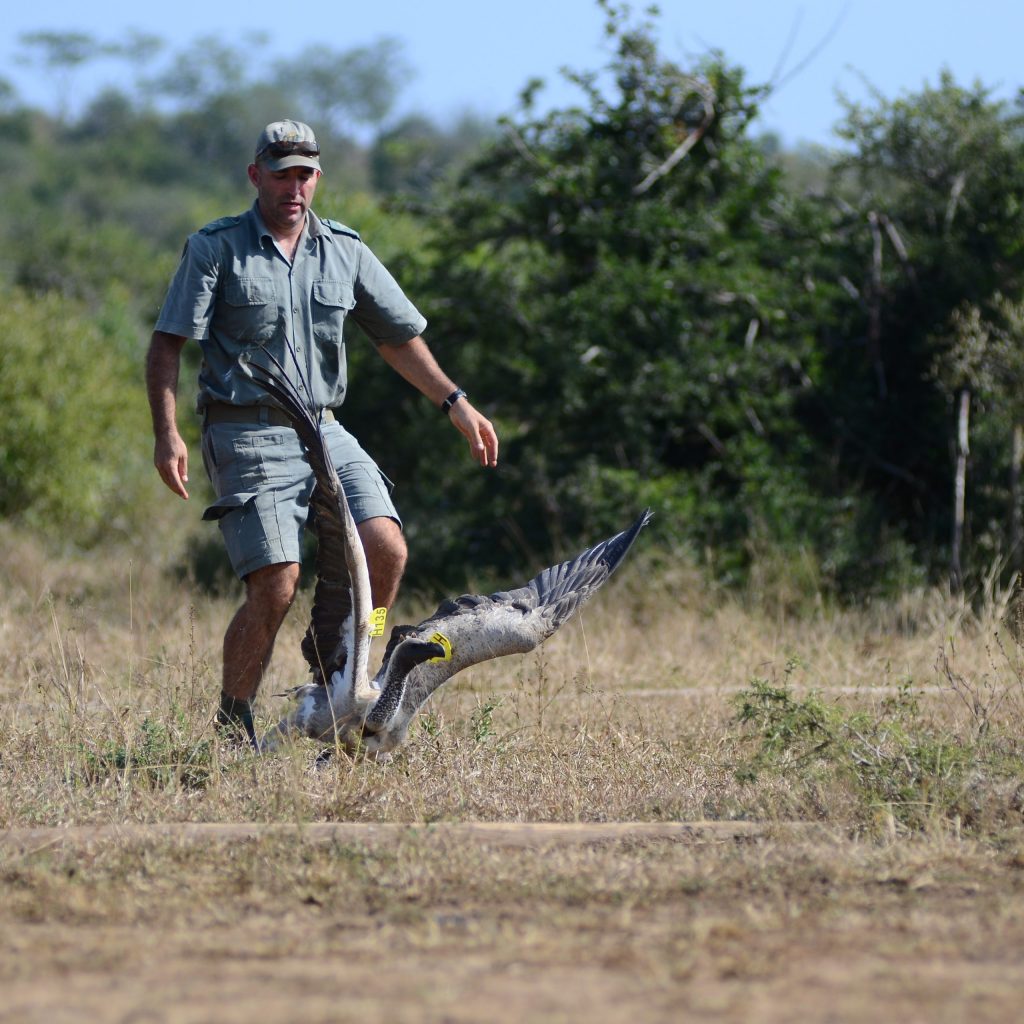Written by Scott Christensen: Chair, Board of Trustees, Wildlife ACT Fund Trust
A week in the field with the Zululand Vulture Project
It was a great privilege to spend a week with the team leaders of the Zululand Vulture Project, a collaboration between Wildlife ACT (WLA) and Ezemvelo KZN Wildlife, the conservation authority of KwaZulu-Natal province. The team spent the week capturing and tagging the critically endangered White-Backed Vulture. It was an incredible vulture conservation experience of learning and getting acquainted with some outstanding conservationists. On one morning we were joined by a truck of Wildlife ACT volunteers who were performing monitoring duties nearby, providing them their first close encounter with vultures and a unique opportunity to observe the intense work carried out by leading experts in the field.
In addition to Chris Kelly, WLA’s Director of Species Conservation, and PJ Roberts, who heads up WLA’s Human-wildlife Coexistence Programme, we were joined by Brent Coverdale, Dr. Dave Druce, and Dr. Sonja Krueger, scientists and ecologists with Ezemvelo KZN Wildlife, Dr. Emile Smidt, a political ecologist specialising in park management systems, and two researchers from the University of Houston. Together the vulture conservation team fitted uniquely identifiable patagial tags and leg rings, and took blood and swab samples from 16 birds. Novel light-weight, solar-powered GPS tracking units, developed by Wildlife ACT’s affiliate, Wildlife ACT Innovations, were mounted on 6 adults.

These efforts will contribute to the understanding of population clustering, migration and nesting behaviors, and microbiome profiling of the population. The data will inform conservationists as they address increasing threats to the vulture populations and the critical services these birds provide in the ecosystem. By disposing of rotting carcasses and other organic waste, vultures help limit the spread of pathogens among wildlife and livestock and their potential transmission to humans.
Vulture numbers have been in sharp decline due to poisoning (both intentional, and collateral) and collisions with infrastructure (power lines). Their ecosystem services are particularly important in areas like KwaZulu-Natal, a traditional nesting refuge where multipurpose land-use practices bring lots of humans into very close proximity to natural ecosystems and wild animal populations. Learn more on vultures and the Zululand Vulture Project here.
A Typical Day and Night of Vulture Conservation in the Field
The fieldwork requires patience, speed and precision. Each session begins at sunrise by placing a carcass in a strategic spot and setting the traps. This is followed by a long wait in the trucks to lure in the birds, sessions that usually involve consumption of the previous evening’s leftovers combined with discussions on the latest research and field discoveries.
A venue of vultures eventually gathers around the carcass. When one or two brave birds finally take the bait the remaining vultures quickly leap and hoard while others dive-bomb seemingly out of nowhere into the ruckus. It all happens in seconds. Once the birds are caught, the trucks make a bee-line for the scene, as speed is important to limit risk of injury to the birds. Out of a typical carcass mass of 20-30 birds the traps catch 5-6 individuals on average. The birds are then quickly retrieved and put individually into large crates while awaiting tagging and profiling.

After measurements are documented and tags affixed the birds are carefully released and tracked. The researchers who joined on this trip were also taking multiple swab samples from different areas of the anatomy to conduct microbiome profiling. This feeds into determining the plant and animal life that the vultures are immersed in, again to inform an understanding of behavior, migration, and nesting patterns.

The long days would conclude with a hearty braai, always a collegial group effort, and prepping for the next morning’s work. We were entertained by the male impalas in rut as they charged through the campsite snorting wildly and sparring with the younger upstarts. And on two evenings we were graced by the unsolicited visit of a large and curious bush pig. When in the bush it’s quite important to follow the general rule “Don’t feed wild animals.” They eventually lose interest and amble away, making the rest of the night safer for animals and sapiens alike.

The post Vulture Conservation in Zululand – Behind the Scenes appeared first on Wildlife ACT.

